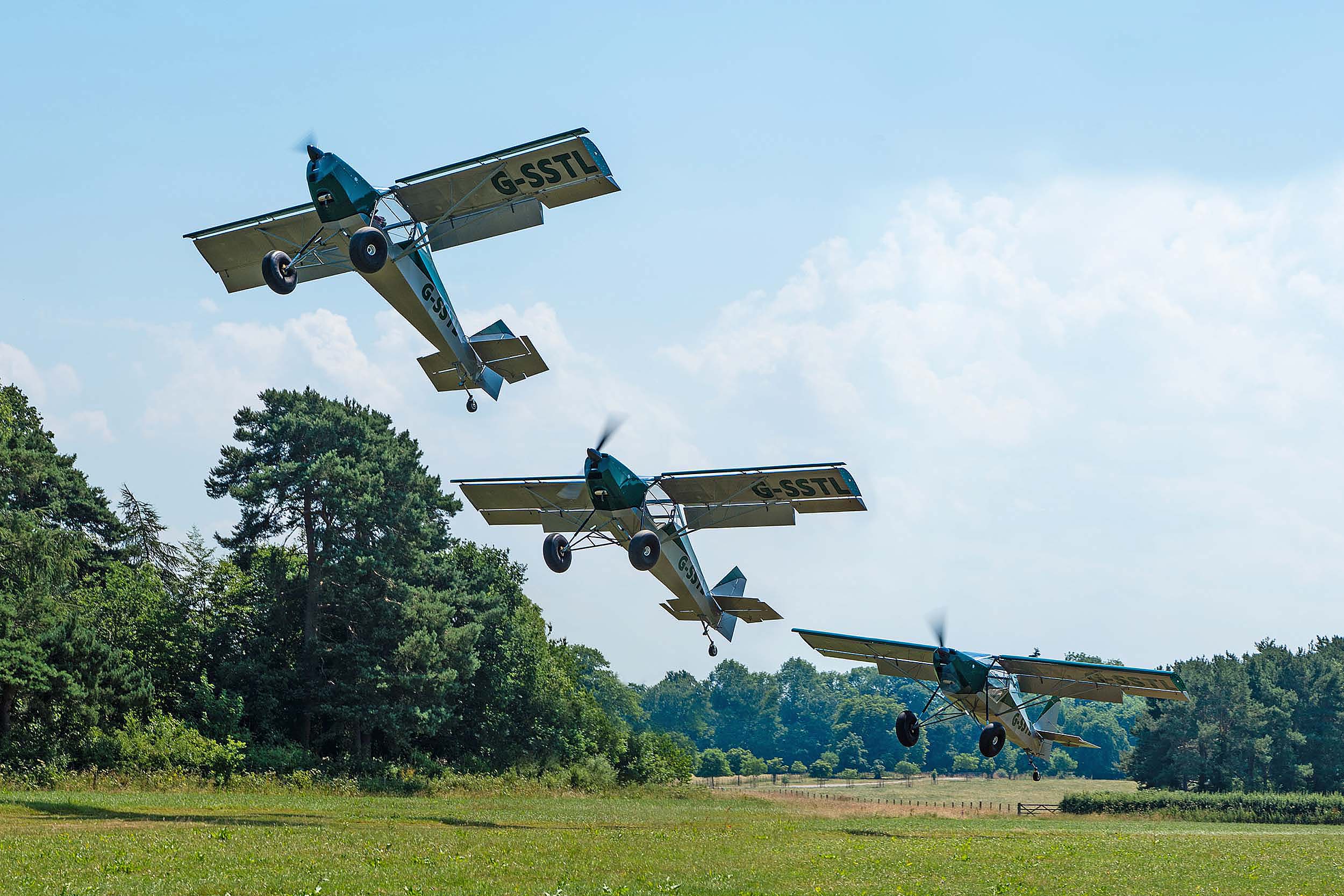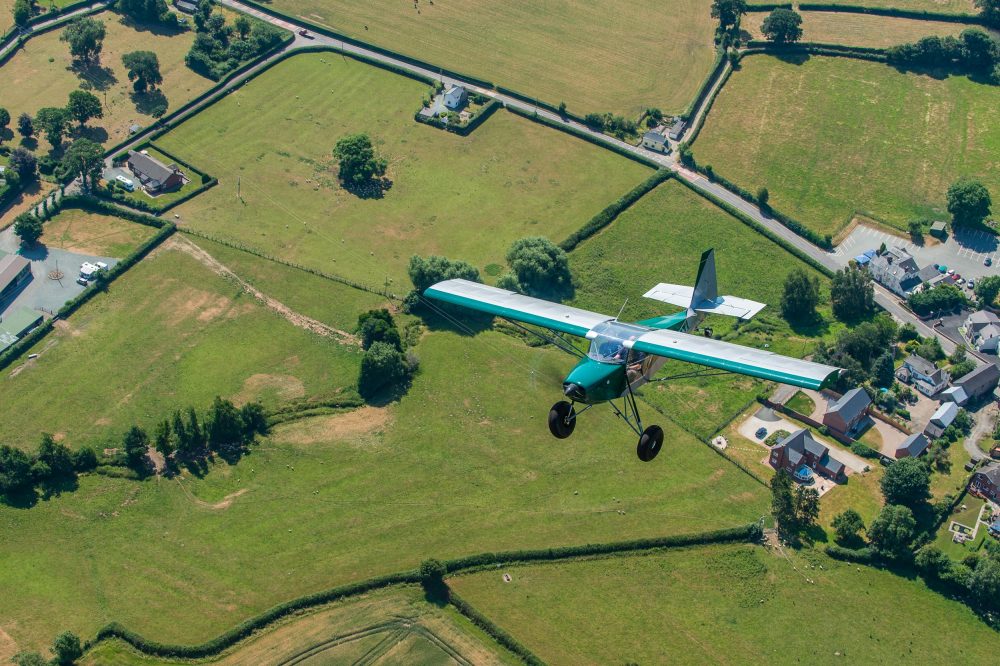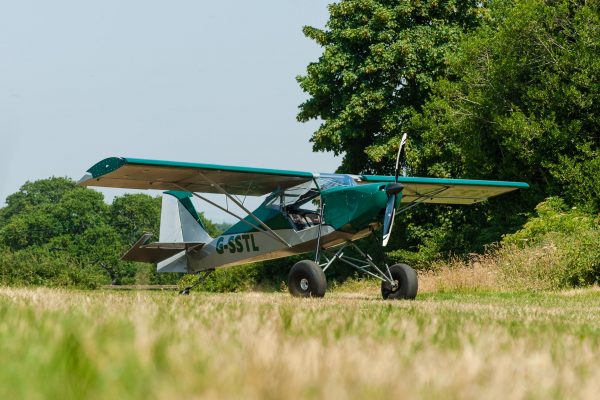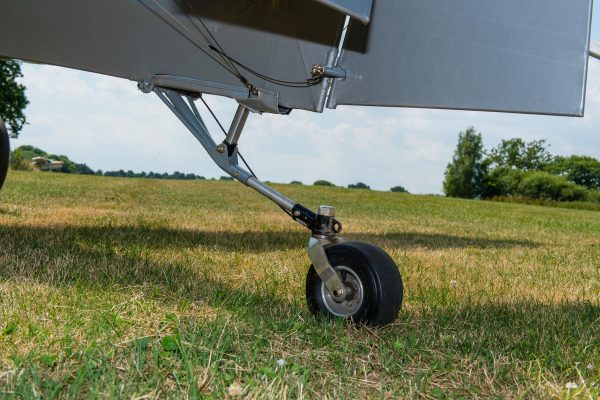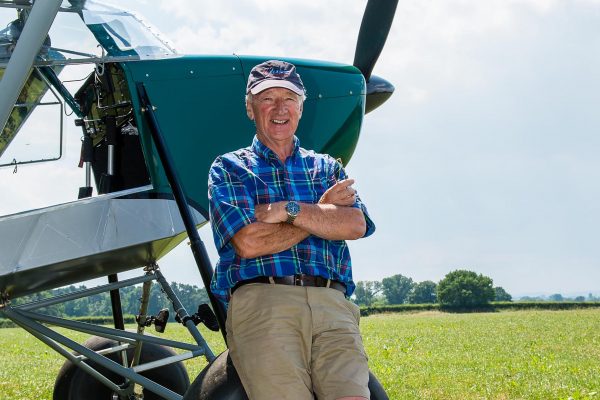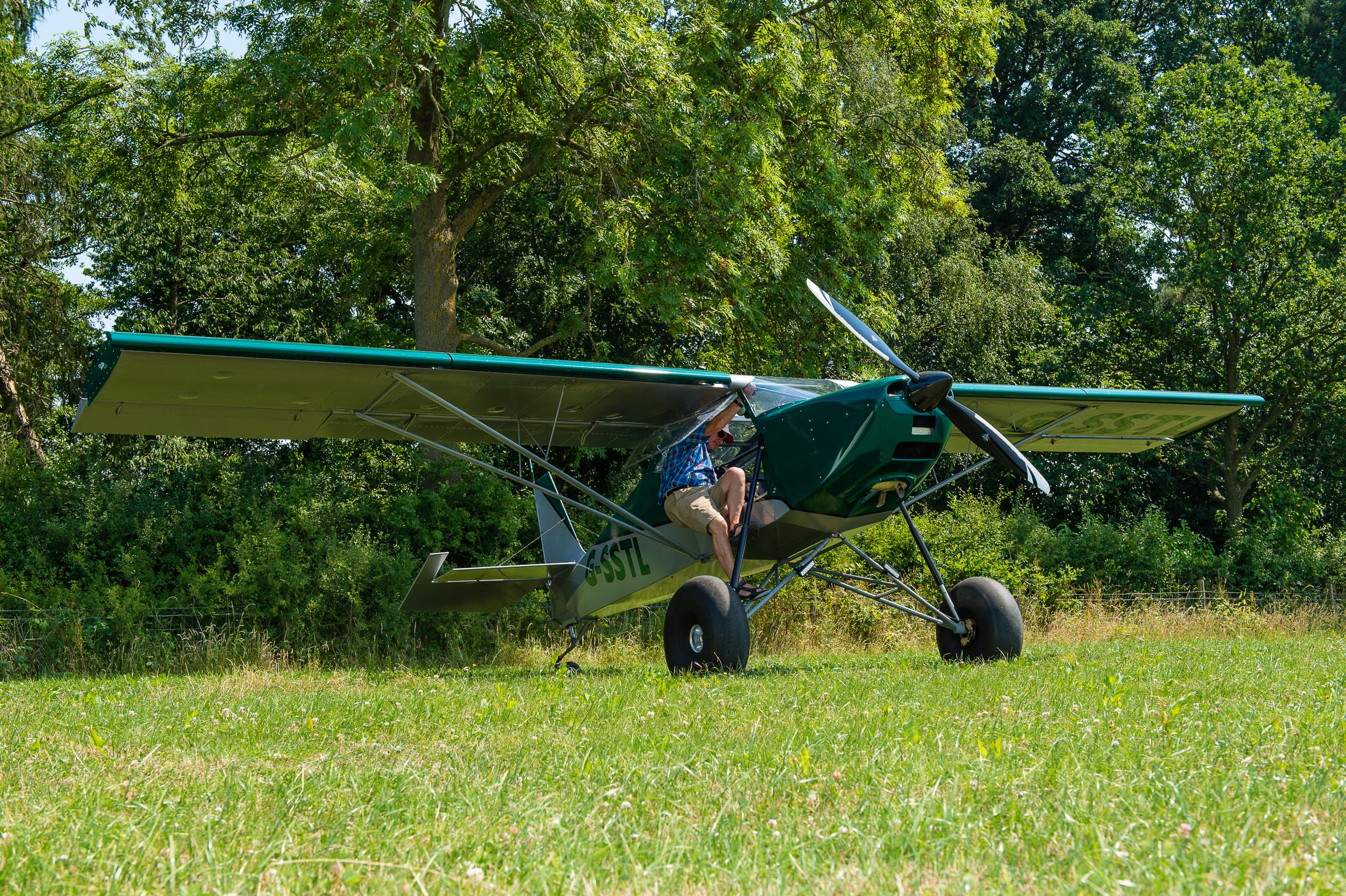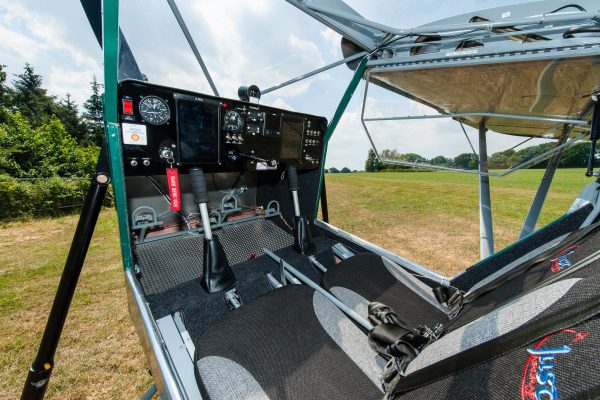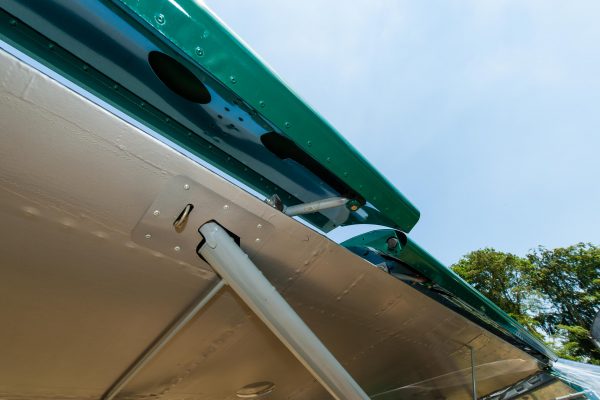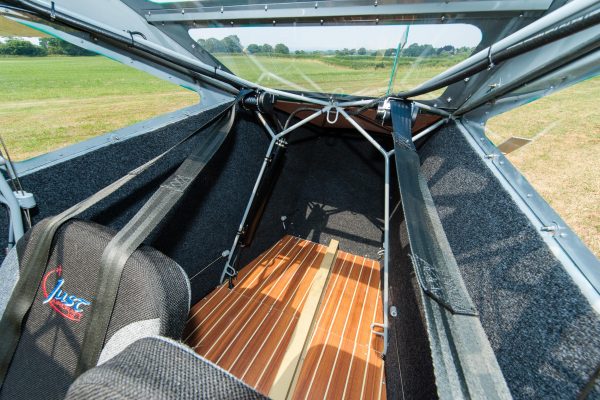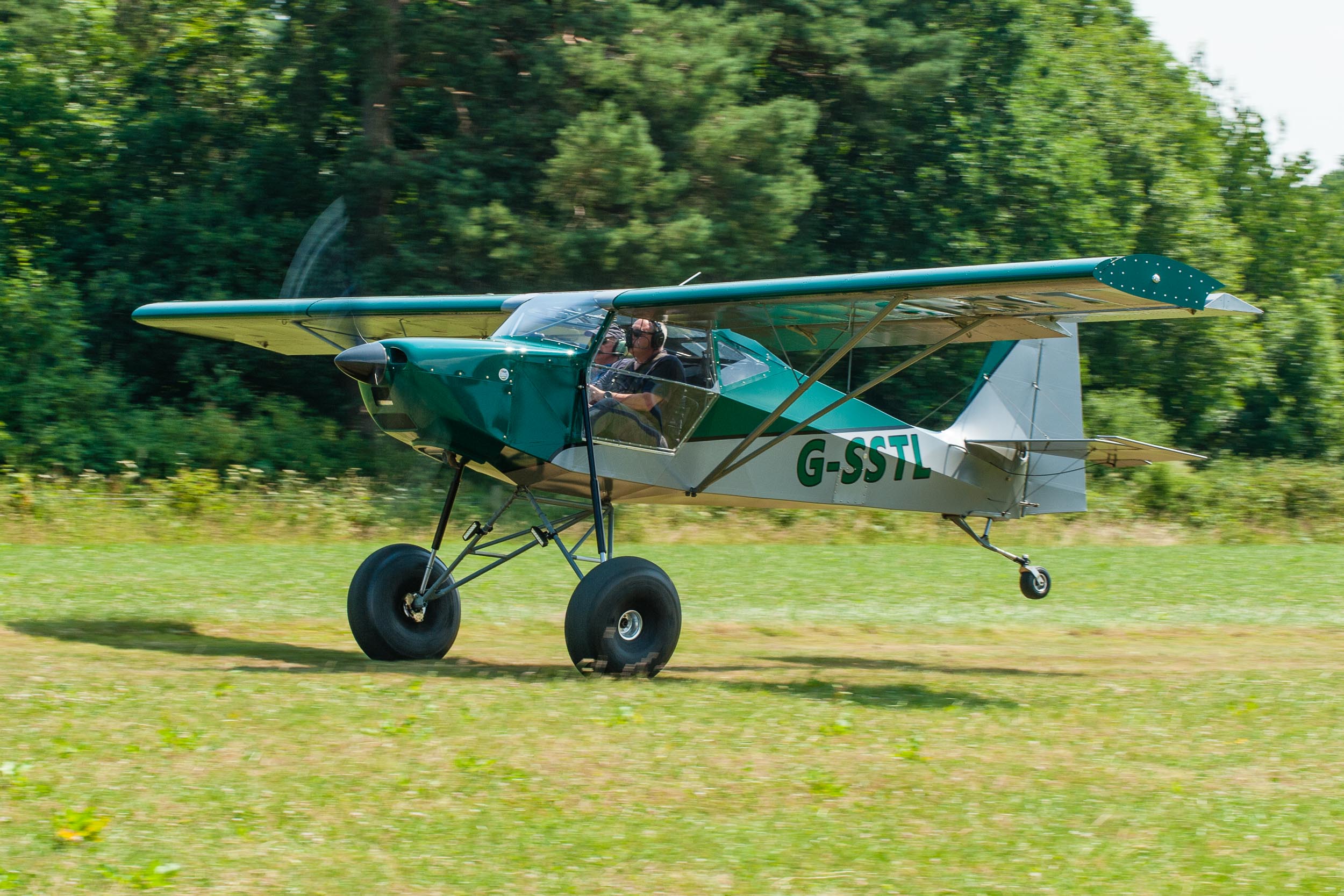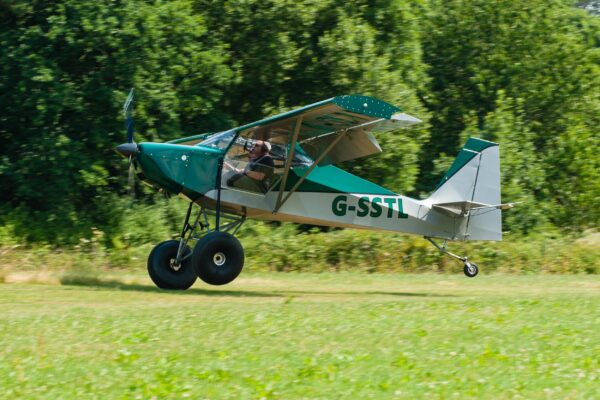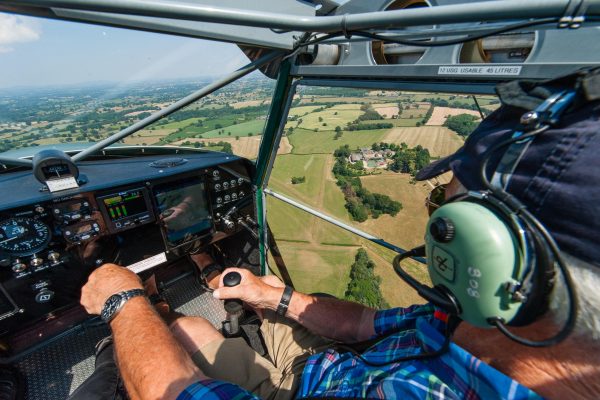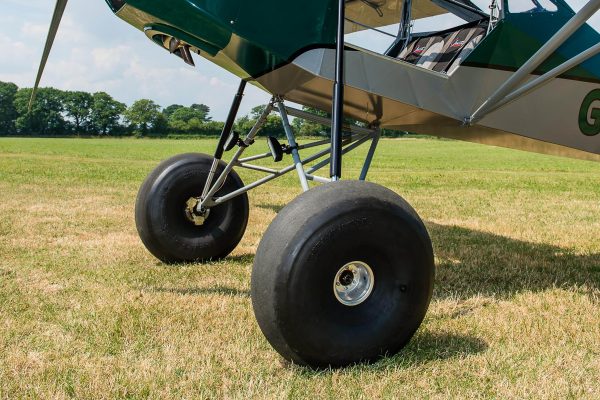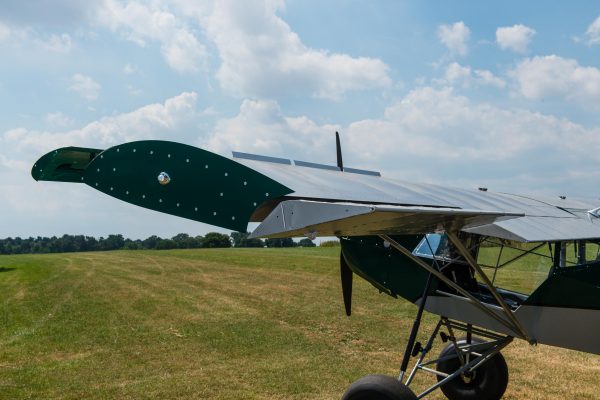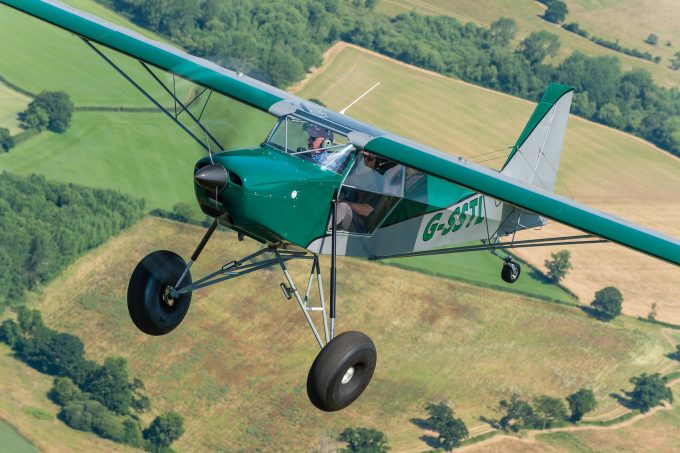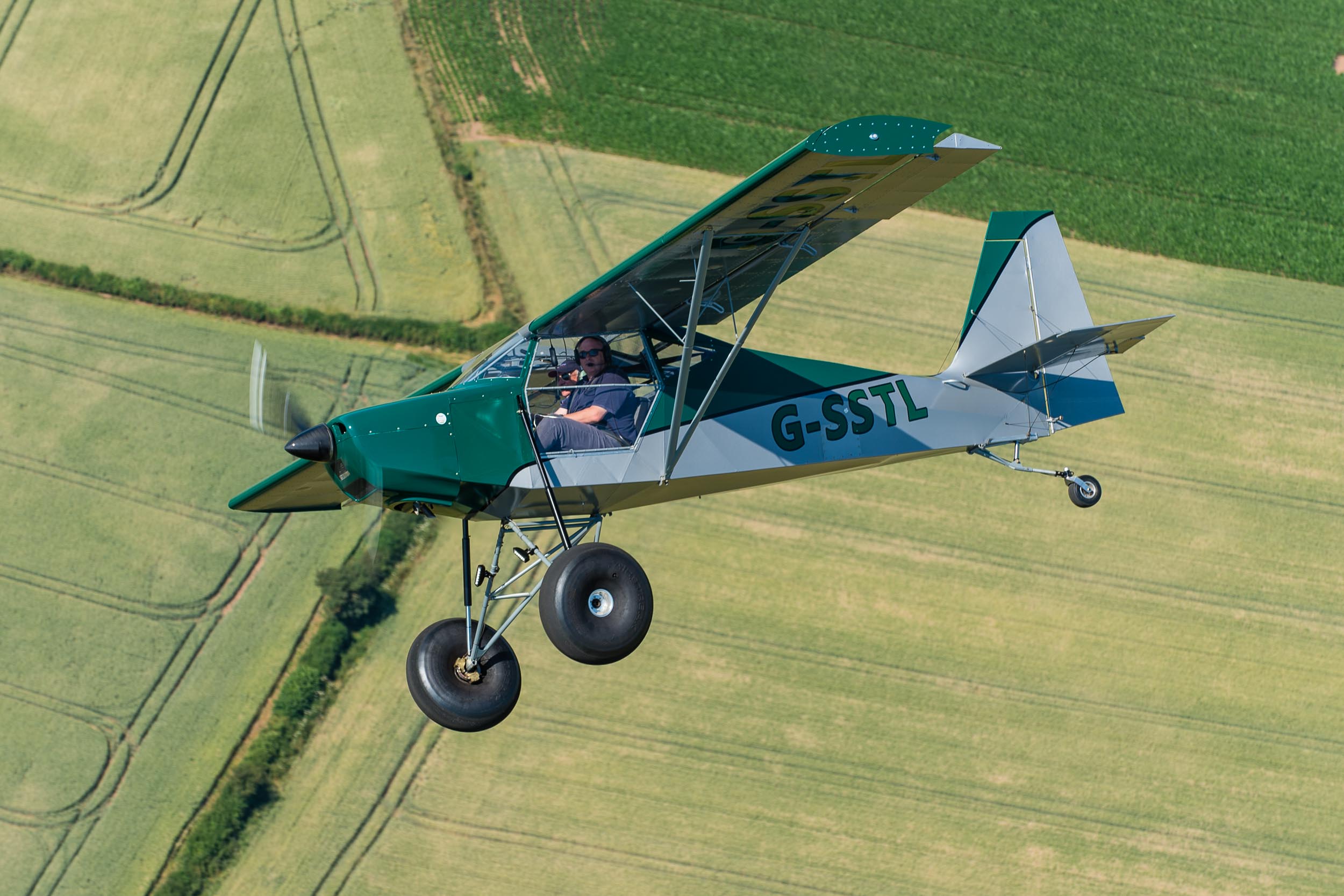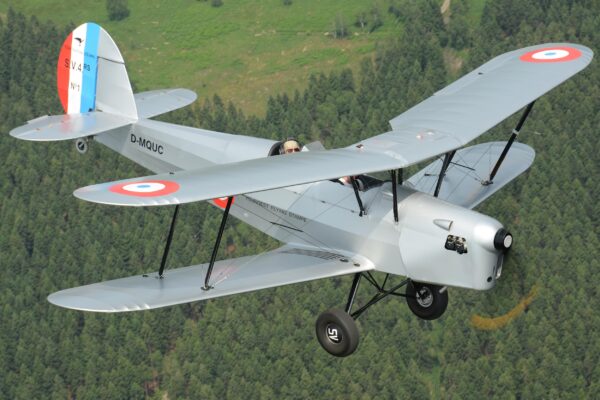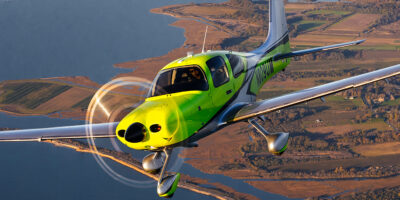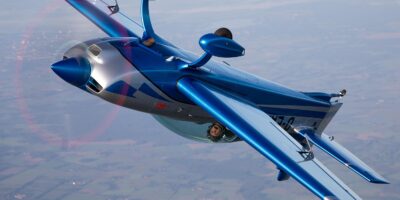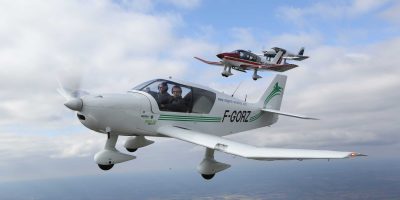Big shoes
Even though it’s a relatively small, two-seat LSA, the SuperSTOL is pretty imposing, mainly thanks to its tall undercarriage and huge tyres. G-SSTL has a pair of 29in Airstreak Bushwheel tyres fitted to its diminutive-looking Matco wheels, and although they definitely add to the look of the aeroplane, they also bring some practical benefits.
In a traditional GA aircraft you have three elements, namely the wheel, the tyre and the inner tube. The tyre’s bead is seated on the wheel’s rim, and is inflated via a valve which protrudes through the wheel.
The Bushwheel is tubeless so there are just two parts, the wheel and the tyre. Rather than the valve pushing through the wheel, it’s moulded into the tyre’s sidewall. With this
set-up, any movement of the tyre on the wheel’s rim, which is more likely at low tyre pressures, wouldn’t see the valve ripped out, so you won’t get stranded.
Typically, a bush tyre will run pressure of 6-12 psi, so they’re super-soft (think of a kid’s Space Hopper), play an essential role in the suspension and easily roll over rocks, stumps, holes and, rather unhelpfully, chocks. I’m told that they also make waterskiing in an aircraft much easier.
Of course, you don’t get something for nothing, and there are a couple of downsides to having such big shoes. The first is cost, as while a couple of ‘normal’ 21in tyres
for the SuperSTOL might set you back $300 a pair, the 29in variety are closer to $3,000, and as the slick rubber compound is very soft, they wear out pretty quickly when used on hard runways.
The wheels and tyres sit at the end of some impressive-looking, long-travel 400psi gas struts, which are similar in layout to those on the Pilatus PC-6 Porter. Watch some online videos of the SuperSTOL in action and you’ll see that one landing technique is to drag the aeroplane in and then just cut the power so that it drops to the ground from a few feet, using the gas struts and tyres to absorb all of the energy, without being handed it all back in the form of an embarrassing bounce or three.


